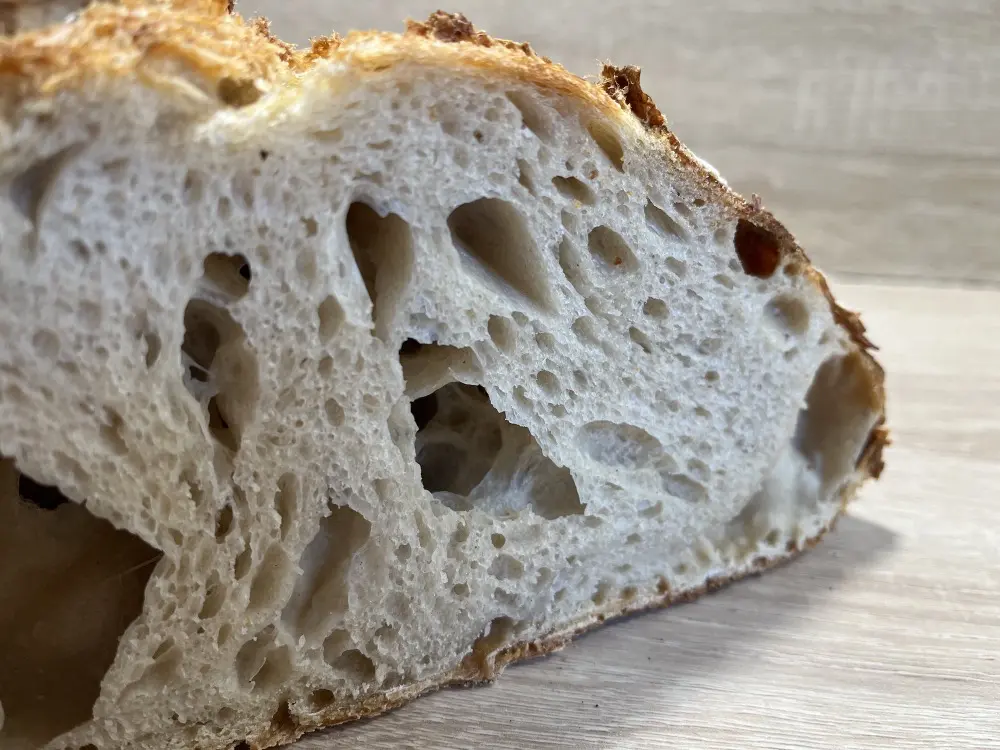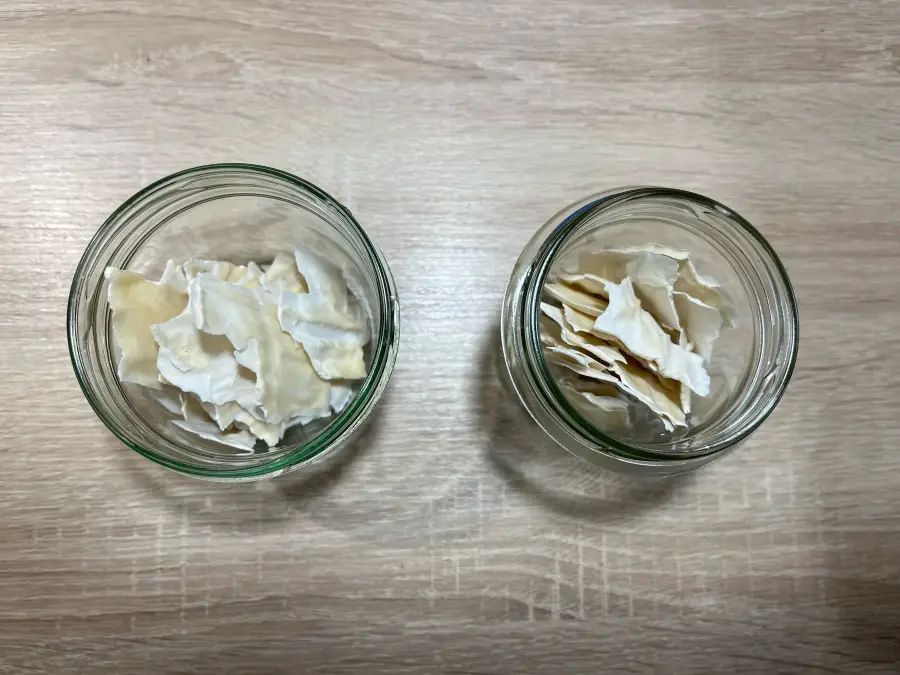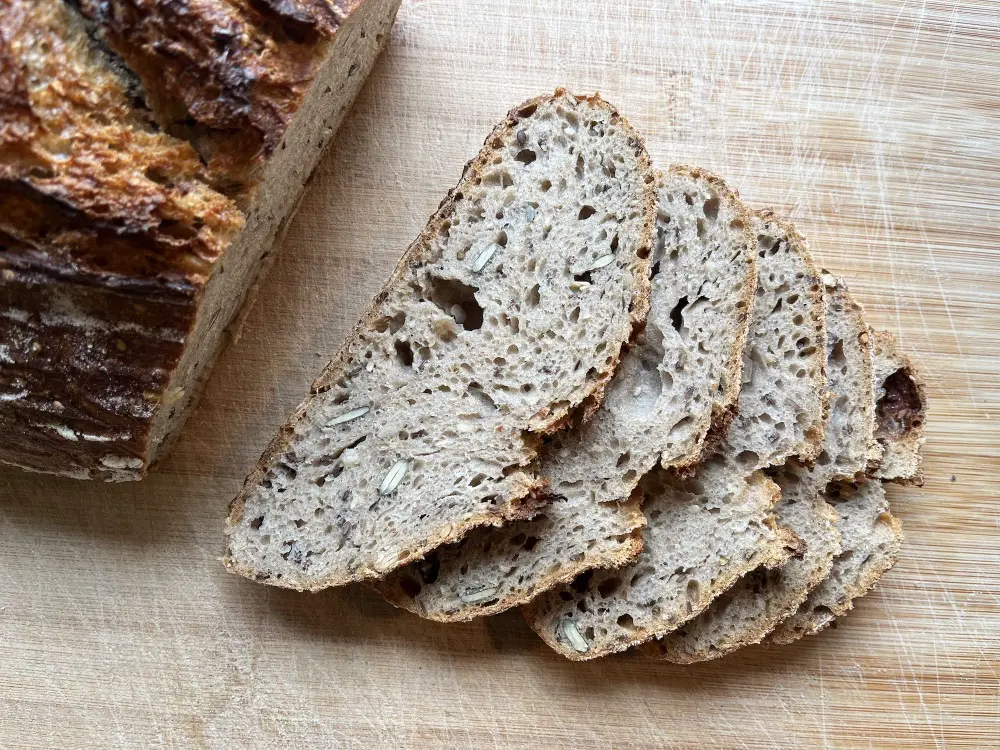
Bread Yoga
Valencian paella.
Posted
16 July 2023
Bread is an extremely simple food in its composition. Flour, water, and salt. Nothing more. But that fact turns it into a small miracle: so few ingredients and in not too large quantities can satisfy a considerable number of people, proportionately. This simplicity also gives us a clue about its antiquity. In fact, bread is one of the oldest prepared foods known to humanity, and that also gives it an almost magical character: eating bread can become a time machine to understand how our ancestors ate.
However, there are certainly more recipes that share both characteristics with bread: ancestral and simple. That's why today I'm going to talk about one of my recipes, or rather, one of my favorite social events: the Valencian paella.
Indeed, an authentic Valencian paella, made with wood fire and only natural ingredients, is something magical. A relatively small amount of ingredients is enough to provide a complete meal for several people. If we stop and think about it, it's simply magical. But also, if we imagine cooking in an open space, using wood fire, first stewing some meat with vegetables and then adding water and rice... doesn't it seem that the cooking of the ancient Greeks or Romans should be relatively similar? Of course, it does. All of this turns this dish and its preparation into a little journey through time. It allows us, in a way, to understand how our ancestors' diet might have been.
For me, making a paella is an extremely social event: you gather with family or friends, young and old, everyone participates and enjoys the cooking process.
The other aspect that I find wonderful about paella is its social side. Making a paella is not, at least for me, just sitting and waiting for someone to serve you the food. For me, making a paella (the nuance is important, we don't say "eating" but "making" a paella, which automatically includes both preparation and tasting) is an extremely social event: you gather with family or friends, young and old, everyone participates and enjoys the cooking process. It's an event. While it cooks, people talk, laugh, share jokes. Children play. People snack on small appetizers and have beer or vermouth. It's truly incredible. Finally, when the food is ready, everyone rushes to the table. Everyone likes it. Of course, there's always someone who doesn't like beans or who got a piece of chicken they didn't expect... they set it aside, and that's it. But everyone loves the rice. We all have a fantastic day. It's truly something magical.
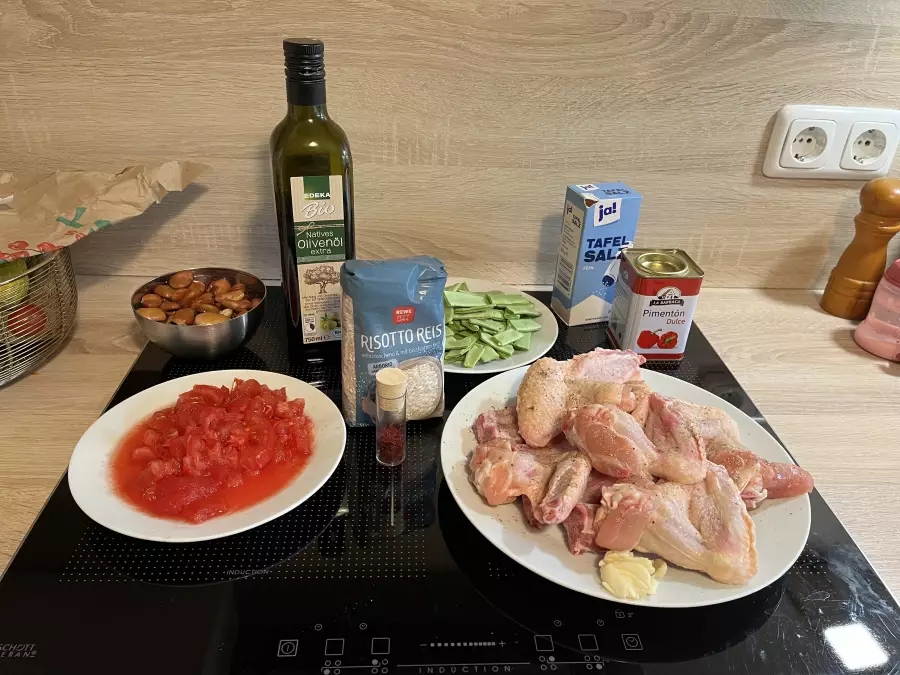
Paella is an inherently humble and simple dish. Just as simple as its name, 'paella,' which in Catalan simply means pan or skillet, derived from the Latin word 'patella.' Originally, it was a humble meal prepared by farmers in the countryside, made with whatever was available at the time. That's why there's no single recipe for paella: you can add green beans, bell peppers, artichokes, peas, chicken, pork ribs, rabbit... essentially, whatever you have. This is for the classic versions, the 'paella de campo' or countryside paella. Then there are the seafood versions with shrimp, cuttlefish, mussels, crayfish, etc. There are many variants, but two things never change: the rice and the onion. Always rice, never onion :)
Now, I'll explain how I like to make paella.
Ingredients for 4 people: | |
|---|---|
| Round rice. Arborio rice works perfectly. | 100g per person. |
| Fresh green beans. | Approx. 200g. |
| Garlic cloves | 2 units |
| Bell pepper | 1 |
| Garrofó beans (or you can substitute them with large lima beans). | 100g. |
| Chicken. | Half a chicken. |
| Pork ribs. | 200gr. |
| Grated tomatoes. | 2 |
| Sweet paprika. | 2 teaspoons. |
| Saffron. | Approx. 15 strands. |
| Rosemary. | 1 sprig. |
| Olive oil. | |
| Salt. | |
| Water. | |
How to cook a paella step by step
To make a paella, the right pan (or skillet) is essential. You could use any type of pan, but it's not the same. It must be very large so that the rice spreads over its surface, creating a layer approximately two centimeters thick. A deep pan is not suitable. You can buy an authentic Valencian paella pan on Amazon for less than 20 euros.
The fact that the pan is so large can also be a problem for conventional stoves, so I recommend using a special gas burner (also available on Amazon) or making it with wood fire, as I do. Cooking with wood fire is a bit more complex since you have to learn how to set it up and how to ensure the flame is as even as possible, but it's all a matter of practice.
To start, place the paella pan on the fire and add a generous splash of olive oil. When the oil is hot, add the garlic cloves and fry them until they start to brown. At that point, remove them; we won't need them anymore (if we left them, they would give a bitter taste).
Next, add the meat (all of it), previously seasoned with salt and pepper, and brown it in the oil. Once it's browned, add the vegetables: cut the green beans into pieces of about 5 cm, the bell pepper into strips, and the large lima beans (uncooked, but I soak them two days before making the paella).
Stir everything in the pan using a spoon while continuously mixing.
Then, make a small hole in the middle of the mixture and add the saffron strands to fry them. Be careful not to let them burn. Afterward, mix everything again and add two or three teaspoons of sweet paprika. When you mix the paprika, the oil will start to thicken a bit... that's good. Finally, add the grated tomatoes and continue stirring. The content will start to become more pasty. After about five minutes, you can add the water. You should add approximately three parts of water for each part of rice, which is 1200g of water per 400g of rice, but you might need a bit more. Start stirring, and a delicious broth will begin to form. Add salt to taste and let the broth boil for 30 minutes, stirring occasionally.
At that precise moment, you've earned yourself a beer: ask someone to bring it to you!
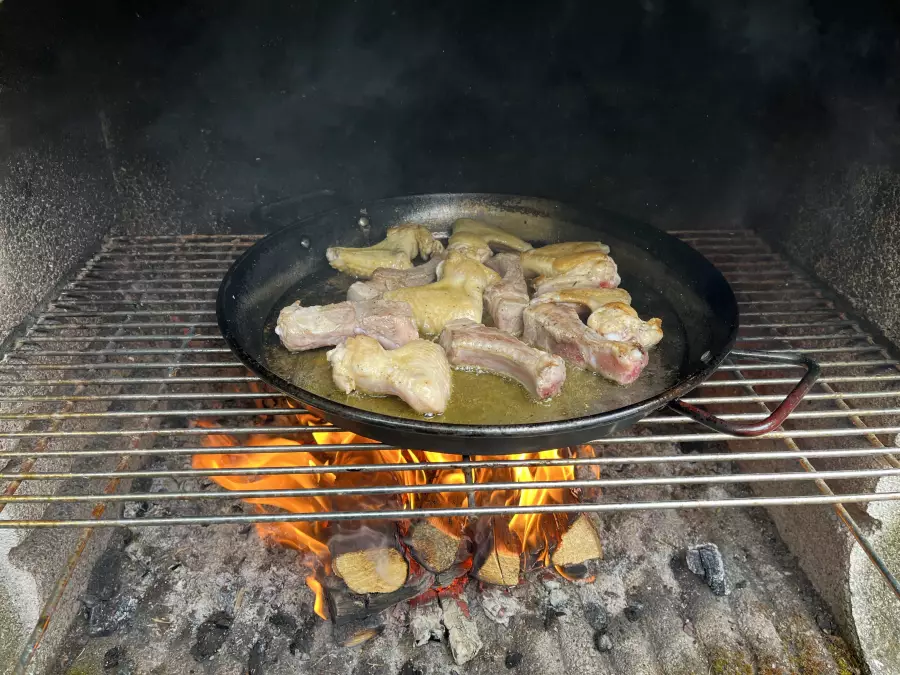
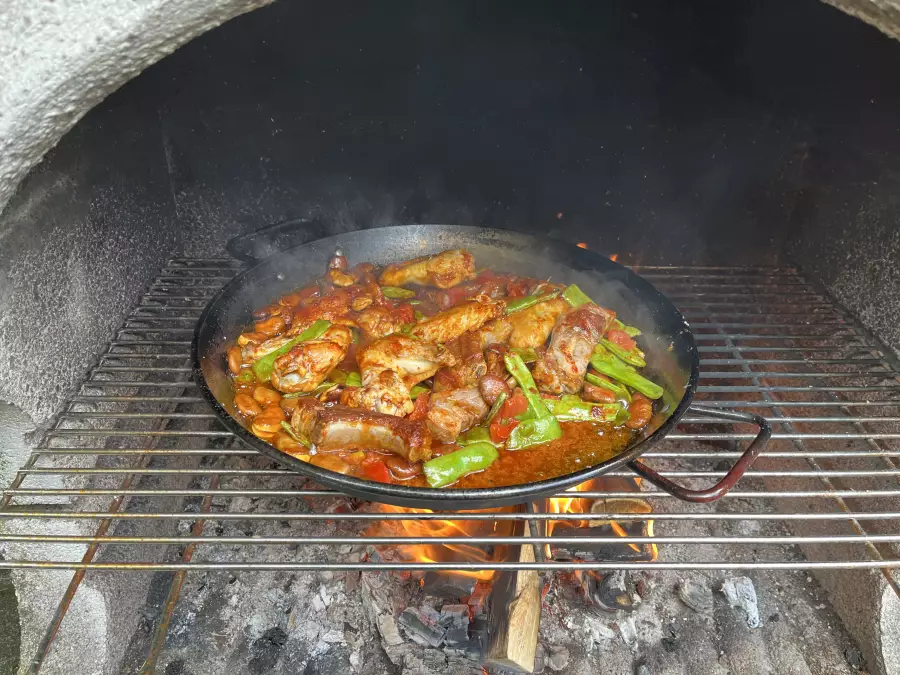
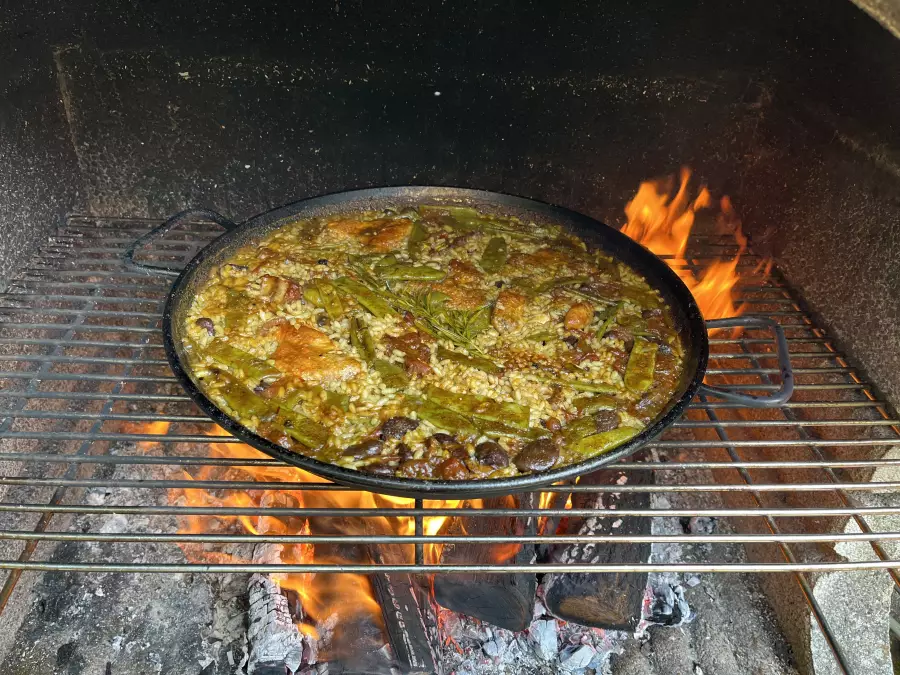
After the 30 minutes, the decisive moment for the paella arrives: adding the rice. Pour it all over the surface of the pan, keeping in mind that from now on, you should not stir the paella with the spoon anymore. At most, you can move the paella with short and dry circular motions to shake its contents. Once the rice is added, the countdown begins: exactly 20 minutes, and the paella will be ready. At this point, the heat should be slightly higher until the rice starts to boil, but once it boils, it should be reduced: the cooking should be very gentle.
During the rice cooking, check for saltiness and make sure it doesn't run out of water; if it does, simply add a little more. When there are 5 minutes left to complete the rice cooking, two very important things must be done: first, add a sprig of rosemary in the center to infuse its flavor, and second, increase the intensity of the fire to achieve the 'socarrat.' The 'socarrat' consists of the lower rice grains to toast slightly, but without burning. It requires some practice, but it gives the paella an irresistible touch.
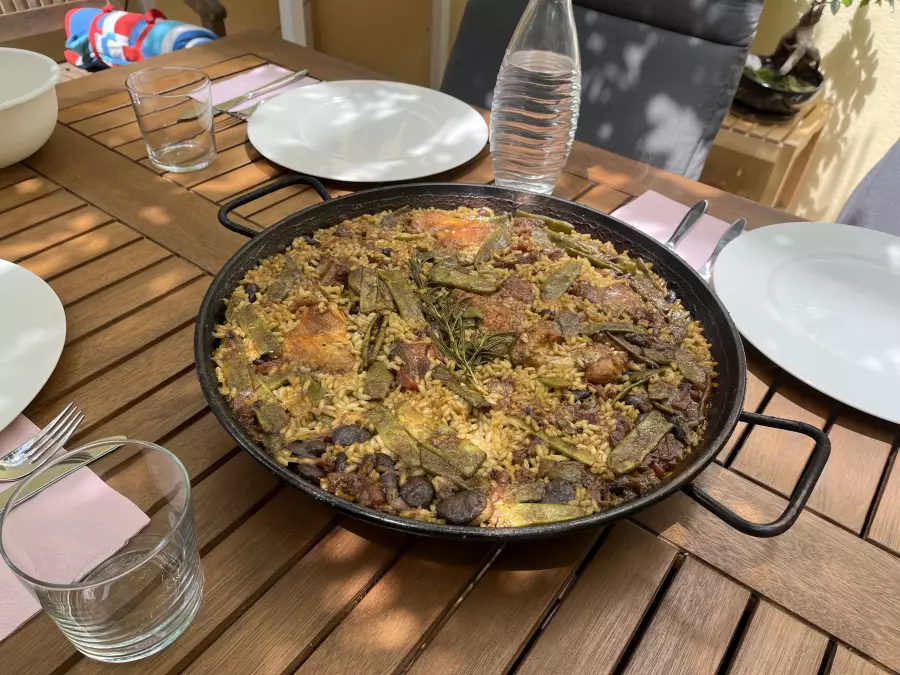
After the 20 minutes have passed, we can now remove the paella from the heat and carefully take it to the table to serve it or, as authentic Valencian farmers do, eat it directly from the pan.
Bon profit!
